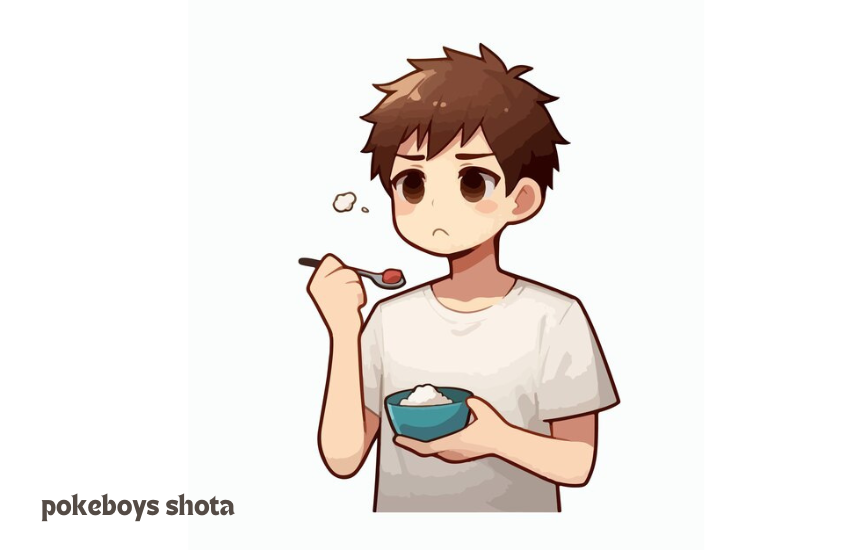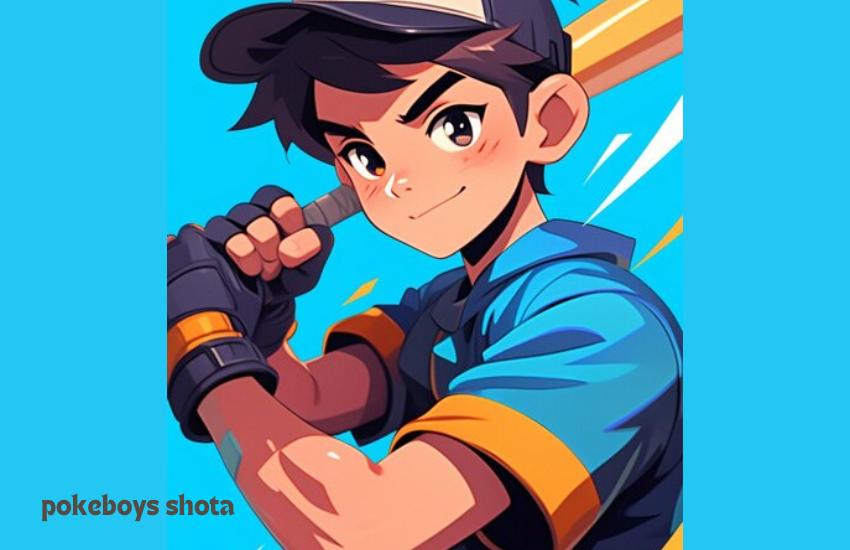What is “Pokeboys Shota”?
“Pokeboys Shota” is a niche subgenre of manga and anime that focuses on young male characters, often depicted in a stylized, cute manner. The term “shota” is derived from the Japanese word “shotacon,” which is a portmanteau of “Shoutarou complex,” referring to an attraction to young boys in fictional works. This genre has carved out its own unique space within the broader anime and manga culture, known for its distinct artistic style and thematic elements.
Historical Context and Evolution
The concept of shota has evolved significantly over the years. Initially emerging in the 1980s alongside the rise of various subgenres of manga and anime, shota has grown from its roots in niche publications to a more recognized genre, albeit still controversial. The evolution of shota reflects broader changes in manga and anime, adapting to shifts in cultural attitudes and artistic trends.
Cultural Significance
Shota plays a unique role in manga and anime culture, often exploring themes of innocence, growth, and sometimes controversial adult themes. It stands out for its artistic focus on youthful male characters and its ability to address complex emotional and psychological narratives through these characters. Despite its niche status, shota has influenced various aspects of anime and manga production and consumption.
Origins and History
Early Beginnings
The origins of shota can be traced back to early Japanese pop culture, where the depiction of young boys in literature and art has long been prevalent. The formalization of shota as a genre began in the 1980s, coinciding with the rise of other specialized manga genres. Early shota works were often underground and targeted towards a specific adult audience.
Influence of Manga and Anime
The growth of shota was significantly influenced by the broader trends in manga and anime. As these mediums became more diverse, the demand for various niche genres increased. Shota found its place among other subgenres like yaoi and yuri, catering to audiences looking for specific themes and character dynamics.
Key Milestones in Development
Significant milestones in the development of shota include the publication of pioneering works that brought the genre into the spotlight. The increasing acceptance and exploration of diverse themes in manga and anime allowed shota to grow beyond its initial underground status. Key publications and the rise of fan communities have also played crucial roles in its development.

Characters and Archetypes
Main Characters
Shota typically features young male protagonists who are often characterized by their innocence, vulnerability, and sometimes a sense of precociousness. These characters are central to the narratives and are depicted in various scenarios, from everyday life to fantasy adventures.
Supporting Characters
Supporting characters in shota works often include older mentors, family members, or friends who play significant roles in the protagonist’s development. These characters help to flesh out the story and provide depth to the main character’s experiences and growth.
Common Archetypes in Shota
Shota works commonly feature archetypes such as the “cute and innocent boy,” the “precocious genius,” and the “troubled youth.” These archetypes help to create familiar yet engaging narratives that resonate with the audience. The use of these archetypes also allows for the exploration of various themes, such as coming-of-age and personal discovery.
Art Style and Design
Visual Characteristics
The art style of shota is distinct, characterized by its focus on youthful and cute aesthetics. Characters are often depicted with large, expressive eyes, soft facial features, and a generally innocent appearance. The visual style is designed to evoke a sense of nostalgia and affection from the audience.
Color Schemes and Symbolism
Color schemes in shota works often use pastel and bright colors to enhance the youthful and innocent atmosphere. Symbolism is also prevalent, with certain colors and imagery used to represent themes like purity, growth, and emotional depth.
Artistic Evolution Over Time
The artistic style of shota has evolved over time, adapting to changes in general manga and anime aesthetics. From the more simplistic and hand-drawn styles of the 1980s to the more polished and digital designs of today, shota art has continually developed while maintaining its core visual elements.
Themes and Motifs
Common Themes in Shota
Shota works often explore themes such as innocence, growth, friendship, and emotional development. These themes are central to the narratives and help to create engaging and relatable stories. The exploration of these themes allows for a deep emotional connection between the characters and the audience.
Motifs and Symbolism
Common motifs in shota include the use of nature, school settings, and fantastical elements to create a sense of wonder and exploration. Symbolism is also used extensively, with certain objects or scenarios representing broader themes like maturity, curiosity, and personal growth.
Notable Works and Creators
Influential Manga and Anime
Several manga and anime have become notable for their contributions to the shota genre. These works have helped to define and popularize the genre, bringing it to a wider audience. Examples include titles that focus on character-driven stories and detailed artistic styles.
Prominent Creators
Prominent creators in the shota genre have played crucial roles in its development. These individuals are often celebrated for their unique artistic styles and narrative techniques. Their works have set benchmarks for quality and have inspired many other artists and writers within the genre.
Critically Acclaimed Works
Critically acclaimed shota works often stand out for their storytelling, character development, and artistic quality. These works are recognized both within and outside the niche community for their contributions to the art form and their ability to engage audiences on multiple levels.
Cultural Impact
Influence on Popular Culture
Shota has had a significant influence on popular culture, particularly within the realms of manga and anime. Its unique aesthetic and thematic focus have inspired various other works and have contributed to the diversification of the manga and anime industry.
Representation in Other Media
Shota elements can be found in other media, including video games, merchandise, and even mainstream TV shows. The genre’s distinctive style and themes have been adapted and referenced in various ways, highlighting its impact beyond its immediate niche.
Reception and Criticism
The reception of shota is mixed, with some praising its artistic and narrative qualities while others criticize its controversial themes. Despite this, shota has maintained a dedicated fanbase and continues to be an influential genre within the manga and anime community.
Controversies and Criticisms
Ethical Considerations
Shota often faces ethical scrutiny due to its focus on young characters and the themes it explores. Critics argue about the appropriateness of such content and its impact on audiences. These ethical considerations are a significant aspect of the ongoing debate surrounding the genre.
Legal Issues
Legal issues also arise with shota, particularly regarding the depiction of young characters and the potential for these works to be misinterpreted. Different countries have varying laws and regulations regarding such content, adding complexity to the genre’s legal standing.
Public Perception
Public perception of shota is varied, with some viewing it as a legitimate artistic expression while others see it as problematic. This dichotomy is reflective of broader societal attitudes towards controversial media and the balance between artistic freedom and social responsibility.
Community and Fandom
Online Communities
Online communities play a vital role in the shota fandom, providing spaces for fans to share content, discuss their favorite works, and connect with like-minded individuals. These communities are essential for the genre’s continued growth and support.
Fan Art and Creations
Fan art and creations are a significant part of the shota community, showcasing the creativity and passion of its fans. These works often expand on existing narratives or create entirely new ones, contributing to the richness of the genre.
Conventions and Meetups
Conventions and meetups offer fans the opportunity to gather in person, celebrate their shared interests, and meet creators. These events are crucial for fostering a sense of community and for supporting the creators and artists involved in shota.
Merchandise and Commercialization
Popular Merchandise
Shota-themed merchandise includes a wide range of products, from figurines and posters to clothing and accessories. These items are popular among fans and contribute to the genre’s commercial success.
Commercial Success
The commercial success of shota is evident in its widespread merchandising and the continued production of related media. This success is driven by a dedicated fanbase and the genre’s appeal within the larger manga and anime market.
Licensing and Partnerships
Licensing and partnerships have helped to expand the reach of shota, allowing for greater distribution and availability of related products. These business strategies are crucial for the genre’s sustainability and growth.
Global Reach and Adaptation
International Popularity
Shota has gained international popularity, with fans from various countries appreciating its unique style and themes. This global reach has helped to diversify the genre and introduce it to new audiences.
Local Adaptations
Local adaptations of shota works often incorporate cultural elements specific to the region, creating unique versions of the genre that resonate with local audiences. These adaptations help to broaden the genre’s appeal and relevance.
Cultural Differences
Cultural differences play a significant role in how shota is perceived and adapted across different regions. Understanding these differences is essential for appreciating the genre’s global impact and the various ways it is interpreted.

Psychological and Sociological Aspects
Psychological Themes
Shota often explores complex psychological themes, such as identity, growth, and emotional resilience. These themes provide depth to the narratives and resonate with audiences on a personal level.
Sociological Implications
The sociological implications of shota include its impact on cultural norms and values, as well as its role in discussions about media and morality. These implications are an important aspect of the genre’s broader significance.
Future Trends and Predictions
Emerging Trends
Emerging trends in shota include new artistic styles, narrative techniques, and the incorporation of modern technology in production. These trends are likely to shape the future direction of the genre.
Predictions for the Future
Predictions for the future of shota include continued growth and diversification, with more mainstream acceptance and exploration of new themes and settings. The genre’s adaptability suggests it will continue to evolve and remain relevant.
FAQs
Common Questions and Answers
- What is shota?
- Shota is a subgenre of manga and anime focusing on young male characters, often depicted in a cute and stylized manner.
- Why is shota controversial?
- Shota is controversial due to its focus on young characters and the mature themes it sometimes explores, raising ethical and legal concerns.
- Who are some notable creators in the shota genre?
- Notable creators include those who have significantly contributed to the genre’s development through influential works and unique artistic styles.
- How has shota influenced popular culture?
- Shota has influenced popular culture by inspiring various other works and contributing to the diversity of manga and anime genres.
- What are common themes in shota works?
- Common themes include innocence, growth, friendship, and emotional development.
- How do cultural differences affect the perception of shota?
- Cultural differences impact how shota is perceived and adapted, with varying attitudes and interpretations across different regions.
Conclusion
Summary of Key Points
Shota is a distinctive and influential subgenre of manga and anime that focuses on young male characters and explores themes of innocence and growth. Despite its niche status and controversies, it has made significant cultural and commercial impacts.
Final Thoughts
The future of shota looks promising, with ongoing trends pointing towards greater diversification and mainstream acceptance. Understanding its origins, themes, and cultural significance provides a comprehensive view of this unique genre.


